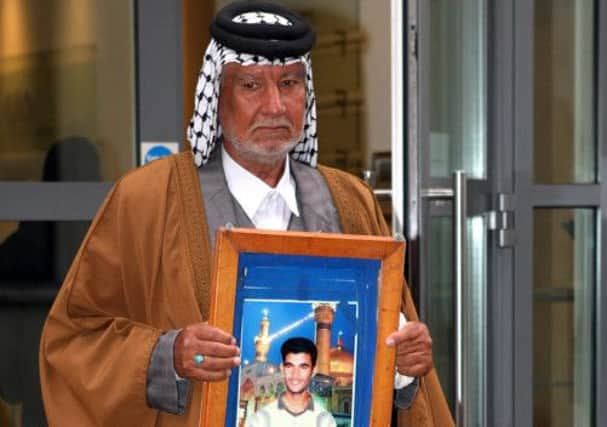Iraq: British troops ‘did not mutilate insurgents’


On the first day of evidence from military witnesses, the Al-Sweady Inquiry was told claims that Iraqis killed in the Battle of Danny Boy were mutilated were “baseless rumours”, spread to discredit coalition forces.
The inquiry is examining claims, denied by the Ministry of Defence (MoD), that 20 or more Iraqis were unlawfully killed at Camp Abu Naji (CAN) near Majar-al-Kabir on 14 and 15 May, 2004, and detainees were ill-treated there and later at Shaibah Logistics Base. Colonel Adam Griffiths yesterday told the inquiry he had not seen any evidence to suggest that bodies taken to CAN were mutilated, nor heard anything about detainees being mistreated.
Advertisement
Hide AdAdvertisement
Hide AdAs the officer commanding B Company, 1st Battalion the Argyll and Sutherland Highlanders on 14 May, 2004, he was leading a “rover group” returning from another camp when it was ambushed by Iraqi insurgents.
Col Griffiths admitted an order to take bodies of Iraqis back to CAN was “highly unusual” but must have been for a good reason – it has been suggested it was given in a bid to identify an insurgent who may have been responsible for the murder of six military police officers in Iraq the previous year.
But Col Griffiths said he did not believe rumours troops had mutilated bodies before they were handed back to relatives.
In a statement to the inquiry, he said: “I did not believe any of our soldiers had mutilated a body and I did not see at the time, and have not seen since, any evidence to support this proposition. I thought then, and I still think now, that the rumours were baseless and caused by a combination of ignorance amongst the local population as to the traumatic injuries that can be suffered in combat and the misinformation spread by insurgents who wished to discredit the coalition forces.”
Col Griffiths said he had seen nothing to suggest mistreatment of detainees at CAN, nor mistreatment on the battlefield, or any “executions”.
The inquiry heard that his rover group was ambushed several times on its way back to CAN. They returned to the base, but in the meantime a Quick Reaction Force had been dispatched and continued the battle. When he returned to CAN, Col Griffiths was told that there was an order to bring the bodies of Iraqis back to the base.
He said around 12 Iraqi bodies were brought back to CAN in Land Rovers, five or six in each vehicle. “I was standing about five metres away from the vehicles and I could see gunshot wounds to the limbs, torsos and heads of the bodies,” he said.
“I did not observe anything that appeared to be inconsistent with battlefield injuries. I can recall that some of the limbs must have been broken as they were sticking out at unnatural angles.” But he said the injuries could be caused by ammunition.
Advertisement
Hide AdAdvertisement
Hide AdSergeant James Gadsby, who was with the 1st Battalion, The Princess of Wales’s Royal Regiment, attached to the Argyll and Sutherland Highlanders, helped unload the bodies at CAN. He said he saw no injuries that did not look like battlefield injuries.
He thought there were about ten bodies in total, laid out in a line outside the medical centre.
Sgt Gadsby said he saw a medical officer check pulses, and then Lieutenant James Rands taking photographs of the bodies – which have since been shown to the inquiry.
He said somebody told him the pictures were for identification purposes in connection with the killing of the six Royal Military Police soldiers.
He told the inquiry he only became aware how many Iraqis were killed during the Battle of Danny Boy after he returned to the UK.
The inquiry continues.